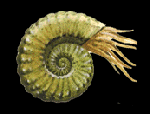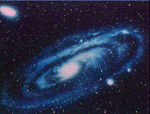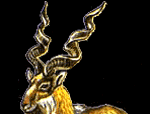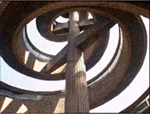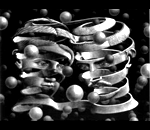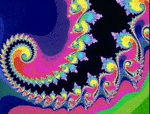Spirals and Helices
A spiral is any plane curve that winds around a point in successive
convolutions, the curve receding more and more from the point
that is called the center. A helix is a kind of three-dimensional
spiral. Formally, a helix is a curve that lies on the surface
of a cylinder or cone with a constant distance between adjacent
coils.
Examples
There are many examples of spirals and helices. Spirals are found
in the shells of snails and of Nautilus, a type of marine mollusk.
They are also found in spiral galaxies. Sunflower seeds are arranged
in a spiral in the center of the flower. Helices are even more
common, both in natural and artificial situations. A coiled spring
is an example of a helix that could be wrapped around a cylinder
while the vortex caused by water going down a plughole is an
example of a helix that could be wrapped around a cone. Perhaps
the best known helix of all is the double helix of DNA. It is
called a double helix because it has two strands wound around
each other, each of which is a helix. Some bacteria, such as
spirochetes, are helical in shape and move due to a helical wave
moving along their length, and some bacteria have helical flagella
to move them forward. The filamentous green algae Spirogyra has
a helical chloroplast running the length of each cylindrical
cell.
From Eyewitness Encyclopedia of Science 2.0.
DK Multimedia.
